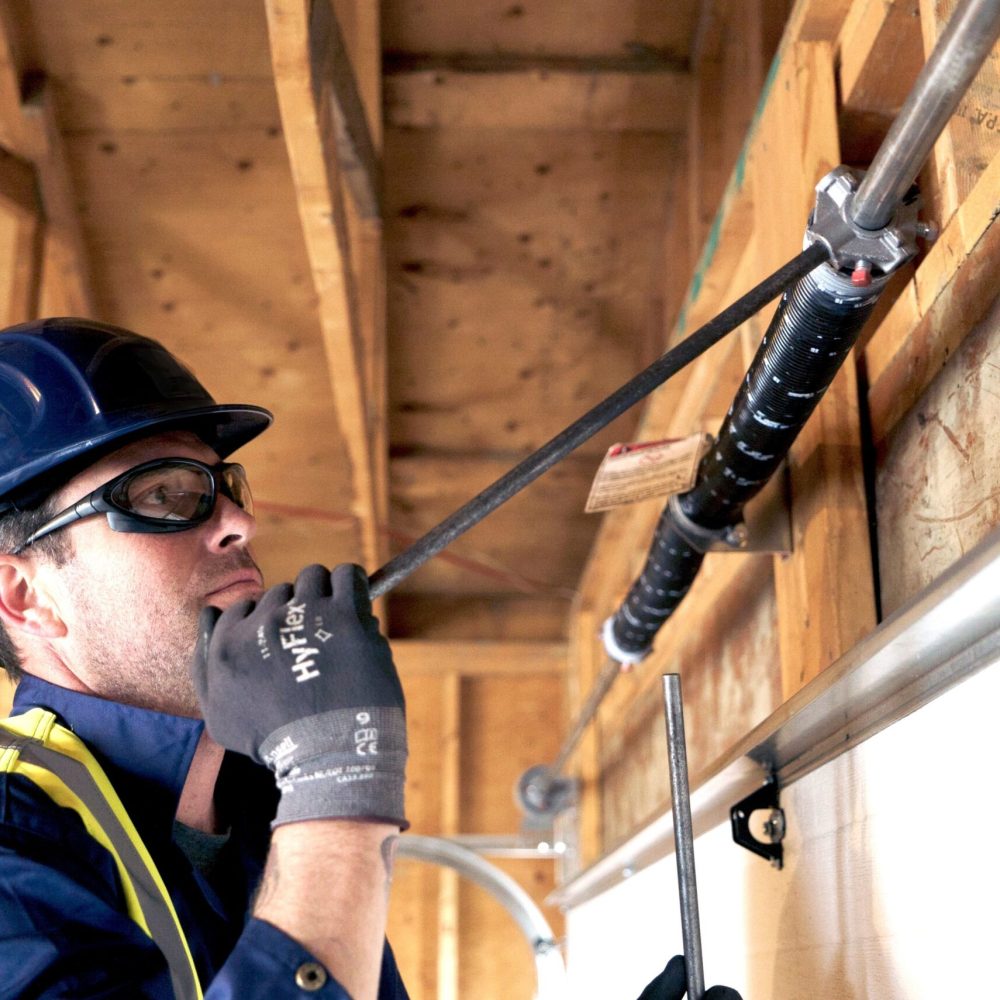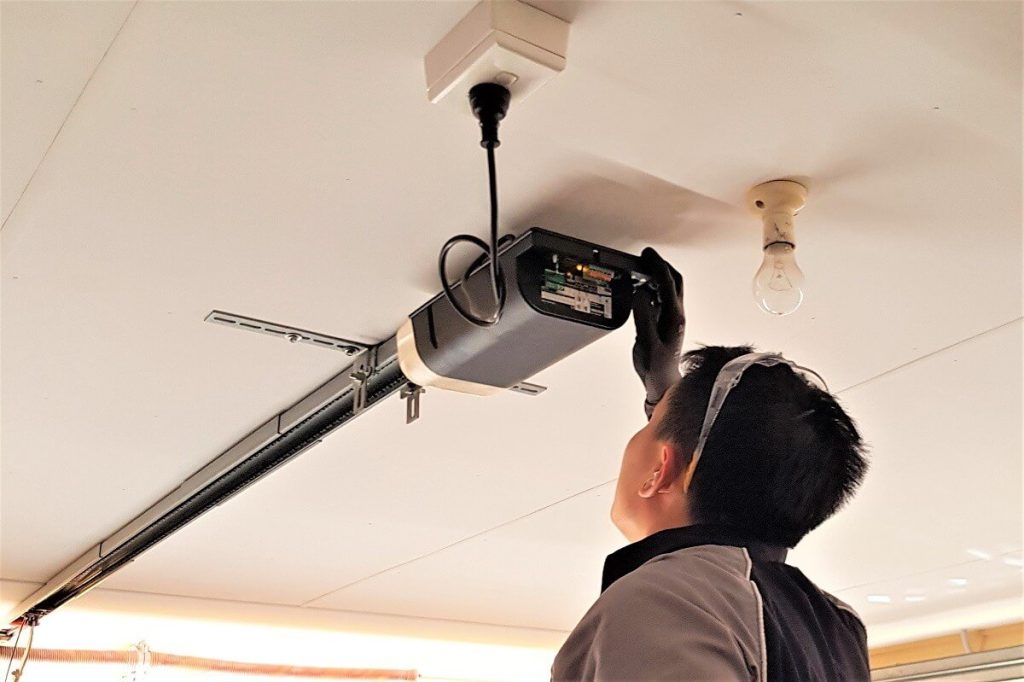When it comes to DIY torsion spring replacement, safety is crucial for success
Tips for safe and successful DIY torsion spring replacement
- Always wear safety glasses and gloves when handling torsion springs.
- Use winding bars to safely unwind and remove the old spring.
- Make sure to measure the length, inner diameter, wire size, and spring wind of the replacement springs accurately.
- Lubricate the garage door tracks and hinges regularly to ensure smooth operation.
- If you’re unsure or uncomfortable with DIY replacement, it’s best to hire a professional.

Understanding Torsion Springs
Torsion springs are essential components of garage doors that provide the necessary force to open and close the door. Understanding how they work and their different types will help in choosing the right replacement for your DIY project.
Key components of torsion springs include coils, legs, and drums, and they function by storing mechanical energy when twisted. Common types of torsion springs used in garage doors include standard torsion springs, EZ-set torsion springs, and Wayne Dalton TorqueMaster springs.
Choose the appropriate type based on your door’s specifications.
Key components and functions of torsion springs
Torsion springs consist of coils, legs, and drums and work by storing mechanical energy when twisted. They are crucial in providing the necessary force to open and close garage doors.
Types of torsion springs commonly used in garage doors
There are two common types of torsion springs used in garage doors: oil-tempered springs and galvanized springs. Oil-tempered springs are more durable and resistant to rust, while galvanized springs have a protective coating for added longevity.
Preparing for Replacement
- Gather the necessary tools and equipment, including a step ladder, winding bars, safety glasses, leather/mechanics gloves, wrench, garage door lubricant, and vice grips/locking pliers.
- Measure the length, inner diameter, wire size, and spring wind of your replacement torsion springs to ensure the proper fit.
- Take safety precautions by wearing protective gear and ensuring that the garage door is secured in the open position before starting the replacement process.
Necessary tools and equipment for DIY torsion spring replacement
To successfully replace torsion springs, you will need the following tools and equipment: a step ladder, winding bars, safety glasses, leather/mechanics gloves, wrench, garage door lubricant, and vice grips/locking pliers. These items are essential for a safe and efficient DIY torsion spring replacement.
Safety precautions and measures to take before starting the replacement
Before starting the replacement, it is crucial to prioritize safety. Take the following precautions:
- Wear safety glasses and protective gloves.
- Keep clothes and body parts away from the springs.
- Use the right tools for the job.
- Follow safe procedures to avoid accidents.
Remember, your well-being is paramount when replacing torsion springs.

Step-by-Step Replacement Guide
To replace torsion springs, follow these step-by-step instructions:
- Gather the necessary tools and equipment mentioned earlier.
- Ensure safety by wearing protective gear and following safety precautions.
- Begin by carefully removing the old torsion spring as detailed in the instructions.
- Install the new torsion spring, making sure to follow installation guidelines and tips provided.
- Test the balance and tension of the new spring and make adjustments if needed.
- Finally, check and adjust the settings for smooth and efficient garage door operation.
Detailed instructions for removing old torsion spring
To remove the old torsion spring, carefully follow these detailed instructions:
1. Gather the necessary tools and equipment.
2. Take safety precautions and wear protective gear.
3. Follow step-by-step guidelines provided by the manufacturer or a reliable source.
4. Handle the spring with caution, as it may still be under tension.
5. Use appropriate tools to release tension and carefully remove the spring from its mounting brackets.
Installation process of new torsion spring with helpful tips
To install a new torsion spring, follow these steps for a successful replacement:
- Gather the necessary tools and equipment.
- Take safety precautions, including wearing protective gear.
- Refer to the manufacturer’s guidelines or reliable sources for step-by-step instructions.
- Carefully handle the new spring, ensuring it is properly aligned with the mounting brackets.
- Use helpful tips, such as using a drill instead of winding bars to wind the springs.
Remember to follow proper procedures and take your time to ensure a smooth installation process.

Testing and Adjusting
- After installing the new torsion spring, test the balance of the garage door by disconnecting the opener and manually operating the door.
- Make adjustments to the spring tension if necessary, using winding bars or a drill to increase or decrease the tension.
- Ensure that the door operates smoothly and evenly, without any jerking or sagging.
- Test the automatic opener to ensure it functions properly with the new spring.
- If needed, consult a professional for further adjustments or guidance.
Checking the balance and tension of the new torsion spring
To check the balance and tension of the new torsion spring, disconnect the garage door opener and manually operate the door to ensure smooth and even movement. Make adjustments to the spring tension if necessary using winding bars or a drill.
Garage door repair Ashland VA Test the automatic opener to ensure it functions properly with the new spring.
Adjusting settings for smooth and efficient garage door operation
To ensure smooth and efficient garage door operation, adjust the settings by checking the balance and tension of the new torsion spring. Make necessary adjustments using winding bars or a drill. Test the automatic opener to ensure it functions properly with the new spring.
Conclusion
Common mistakes to avoid during DIY torsion spring replacement
Rushing the process, not using proper safety gear, and neglecting to test the door’s balance and functionality after installation.
Final thoughts and additional resources for further guidance
For final thoughts and additional resources for further guidance, it’s important to consider the following:
- Take your time during the DIY torsion spring replacement process. Rushing can lead to mistakes and potential dangers.
- Always prioritize safety by wearing the proper gear, such as safety glasses and gloves.
- Test the balance and functionality of your garage door after installing the new torsion spring.
- Avoid common mistakes like neglecting to test the door’s balance or rushing through the installation process.
- If you need additional guidance, there are helpful online forums and tutorials available.
This post was delivered to you by the Accessily platform. If you want to showcase your content on our site, visit the Accessily Guest Post Marketplace.




